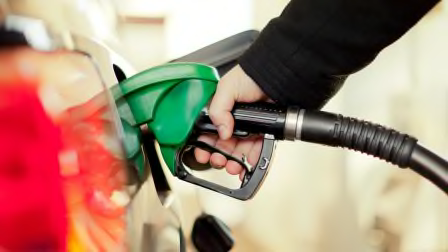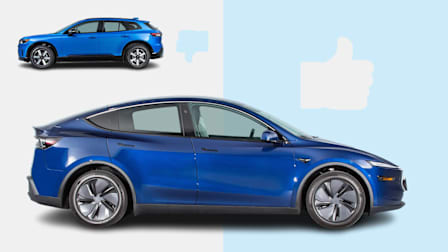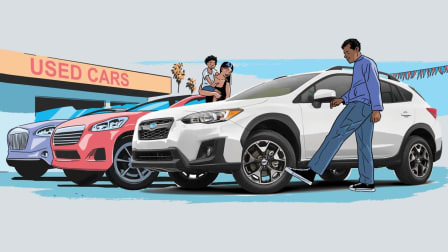New Ways Carmakers Are Getting You More MPG
CR highlights the fuel-saving tech that might be in your next car—and the potential trade-offs in your driving experience

Although most automakers say all-electric vehicles are the future, their engineers also have been busy making fuel-efficiency improvements to the gasoline-powered cars, SUVs, and trucks that most U.S. drivers still rely on. For a variety of reasons, including consumer demand and government fuel and emissions standards, automakers have been forced to invent gas-saving innovations as they try to squeeze out incremental improvements to fuel economy.
Consumers shopping for new cars now face a plethora of these innovations, such as gasoline direct fuel injection, automatic transmissions with more gear ratios, turbocharged engines, and stop/start systems that shut off the engine instead of allowing it to idle. Few of these technologies significantly increase fuel efficiency or reduce tailpipe emissions on their own, but working together they can have a cumulative effect.
What About EVs?
So why all this innovation with gas-powered engines even though electric vehicles clearly outperform all gas-powered cars when it comes to energy efficiency? The case for them is strong: EVs use no gasoline and emit zero tailpipe emissions. They can be quick and very satisfying to drive. And an exclusive CR analysis shows big savings on maintenance and operating costs over time when compared with traditional gasoline-powered vehicles.
The answer is that EVs are not yet a solution for many drivers and are up against several obstacles that so far have held back wider adoption: long charging times, limited (but ever-increasing) battery range, and higher prices. Market demand for EVs and plug-in hybrids has been growing quickly over the past few years—and pure EVs account for the lion’s share of plug-in sales—but together they still account for only 4 percent of the U.S. market.
“Automakers have been slow to build EVs in part because until recently, battery costs have been quite high,” says Chris Harto, senior transportation policy analyst at CR. “That is rapidly changing. Expect to see a lot more compelling EVs over the next few years.”
Based on a flurry of automaker announcements, it’s clear that the industry has plans to move toward more electric models. For example, BMW and Mercedes-Benz—leaders in automotive research and development—say they plan to reach 50 percent electrification across their lineups by 2030. And certain other brands, such as Volvo, have pledged to eventually have an EV option for every model they offer. Some newer automakers—notably Tesla—offer only EVs.
At the same time, Tesla and other companies have been building out national public charging networks, with a growing number of DC fast-charging stations that can make on-the-road charging more palatable for drivers.
According to the federal Alternative Fuels Data Center, there are currently more than 50,000 EV charging stations in the U.S., almost double the number there were in 2019. Depending on the battery and charging equipment, DC fast-chargers can add 60 to 80 miles to EV range in 20 minutes, about the time it takes to eat a quick meal on the road.
“The reality is that most of the effort on internal combustion engines is starting to wind down in favor of electric development,” says Sam Abuelsamid, principal research analyst at Guidehouse Insights, a market research firm. “Much of the restructuring we’ve seen at automakers and suppliers in the last few years has involved getting rid of engineers with engine expertise in favor of more software and electrical engineers. That’s where all the major action is today.”
If you’re a Consumer Reports member, this article is available to you. CR members have full access to the results of our Annual Auto Surveys; first-drive reviews of the newest cars, SUVs, and trucks; and our full road tests and exclusive ratings for each vehicle we buy. If you’re not a CR member, click below to join.




















